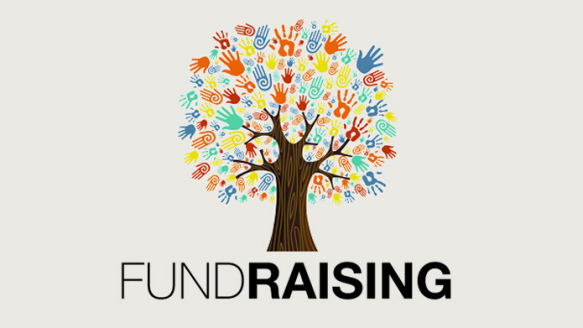Nonprofit Marketing: How to Construct a Powerful Brand and Increase Assistance
Nonprofit Marketing: How to Construct a Powerful Brand and Increase Assistance
Blog Article
The Function of Community Engagement in Nonprofit Fundraising: Structure Lasting Relationships for Sustainable Assistance
Neighborhood engagement is progressively recognized as a vital element of successful nonprofit fundraising. By cultivating authentic partnerships with regional stakeholders, companies can cultivate trust and commitment, which are vital for lasting support. Nonetheless, the methods and methods utilized to involve neighborhoods differ widely, increasing important inquiries about performance and impact. What are the very best methods for cultivating these necessary connections, and exactly how can nonprofits measure their success in this field? Recognizing these dynamics might dramatically influence the future of fundraising efforts and the total mission of nonprofit organizations.
Understanding Neighborhood Engagement
Neighborhood interaction is a vital part of effective not-for-profit fundraising initiatives. It refers to the methods and tasks that companies use to link with their regional areas, cultivating partnerships that are equally advantageous. Comprehending community interaction includes acknowledging its diverse nature, which consists of collaboration, participation, and outreach. Nonprofits need to determine essential stakeholders-- such as community members, neighborhood organizations, and various other organizations-- to develop effective engagement strategies.
Efficient community interaction is based on energetic listening and responsiveness to the needs and rate of interests of the neighborhood. This procedure involves getting responses, comprehending community characteristics, and making sure that the organization's goal aligns with neighborhood priorities. Involving the community can take numerous forms, consisting of public meetings, volunteer possibilities, and collaboration initiatives, each made to motivate participation and investment in the company's goals.
In addition, area engagement must be approached as a continuous discussion rather than an one-time initiative. By fostering an inclusive environment where neighborhood voices are listened to and valued, nonprofits can build a solid structure for future fundraising endeavors. Eventually, a deep understanding of community interaction equips companies to create authentic connections that boost their general performance and sustainability.
Benefits of Solid Relationships
Strong relationships formed with community interaction yield various advantages for nonprofit fundraising efforts. Firstly, these partnerships foster count on and credibility, vital parts in motivating benefactors to add. When potential supporters see a nonprofit actively associated with their neighborhood, they are more probable to believe in its mission and influence.

Moreover, these partnerships help with reliable communication. Nonprofits can utilize their connections to share tales of effect, updates, and requires, guaranteeing that fans continue to be educated and engaged. This open line of communication not only enhances bonds yet additionally urges referral promotion, broadening the nonprofit's reach.
Lastly, solid area connections can attract brand-new partners and sponsors. People and businesses are a lot more likely to align with companies that show meaningful neighborhood participation, offering extra resources and assistance that can substantially enhance fundraising capabilities. Therefore, growing robust connections via area engagement is important to a not-for-profit's long-term fundraising success.
Methods for Reliable Involvement
Just how can nonprofits properly involve their communities to enhance fundraising efforts? Developing targeted strategies is crucial for fostering meaningful links. Initially, leveraging social media sites systems allows companies to share their objective dynamically and interactively, reaching a broader target market. Normal updates, involving content, and calls-to-action can galvanize neighborhood rate of interest and participation.
2nd, holding community occasions, such as workshops, volunteer possibilities, or fundraising drives, assists try these out in face-to-face interaction, permitting nonprofits to showcase their impact and initiatives. These events not only increase funds but additionally grow connections and allow area members to engage straight with the cause.
Third, implementing personalized communication approaches can boost interaction. Tailoring messages to details contributor segments based upon interests and previous contributions cultivates a feeling of belonging and investment in the company's goal.
Last but not least, producing partnerships with neighborhood companies and area leaders can amplify outreach initiatives. Collaborative campaigns can improve presence and credibility, demonstrating a collective dedication to the neighborhood's well-being. By integrating these strategies, nonprofits can develop lasting connections that boost fundraising efforts and drive lasting assistance.
Measuring Involvement Success
While engaging the community is critical for successful nonprofit fundraising, measuring the effectiveness of these involvement efforts is equally crucial. Establishing clear metrics allows companies to analyze how well they are getting in touch with their target market and accomplishing their fundraising goals. Key performance signs (KPIs) such as benefactor retention prices, volunteer participation levels, and engagement on social media sites systems provide concrete data for analysis.

Regularly assessing these metrics makes it possible for organizations to pivot their strategies when essential, making sure that neighborhood interaction stays aligned with their total objective. Additionally, sharing these outcomes with stakeholders fosters transparency and develops count on, urging more community participation. Ultimately, a robust dimension structure not only informs future fundraising efforts but likewise strengthens the connection in between the nonprofit and its fans, laying the groundwork for lasting success.
Case Research Studies in Community Effect
Countless case researches illustrate the profound effect that area interaction can carry not-for-profit fundraising success. One noteworthy instance is the "Something to chew on" initiative, where a regional food financial institution partnered with schools and services to host neighborhood suppers. These occasions not just raised funds but likewise cultivated a sense of belonging amongst participants, dramatically boosting donor retention rates.
One more engaging situation is the "Environment-friendly Spaces Task," which involved local citizens in the check here revitalization of metropolitan parks. This effort not just gathered financial backing from local companies however additionally grew a volunteer base that added to recurring upkeep and shows. The feeling of possession and satisfaction amongst area members translated into sustained contributions.
In the realm of arts, the "Art for All" project efficiently involved neighborhood musicians and clients to develop joint art installments, bring about raised presence and contributions for a neighborhood arts not-for-profit.
These examples highlight that when nonprofits prioritize community participation, they can develop long-term relationships that enhance fundraising efforts, ensuring lasting assistance and promoting a dynamic community society. Such instances show that community engagement is not just a technique however a necessary pillar of not-for-profit success.
Conclusion
In verdict, community interaction is important to the success of nonprofit fundraising efforts. Ultimately, a durable structure of community assistance not just enhances fundraising possible yet also grows a society of collaboration, necessary for achieving long-term organizational objectives and maintaining meaningful impact. fundraising consultant.
Nonprofits need to identify vital stakeholders-- such as community members, regional organizations, and other organizations-- to produce efficient involvement approaches.

In conclusion, neighborhood engagement is indispensable to the success of not-for-profit fundraising efforts.
Report this page